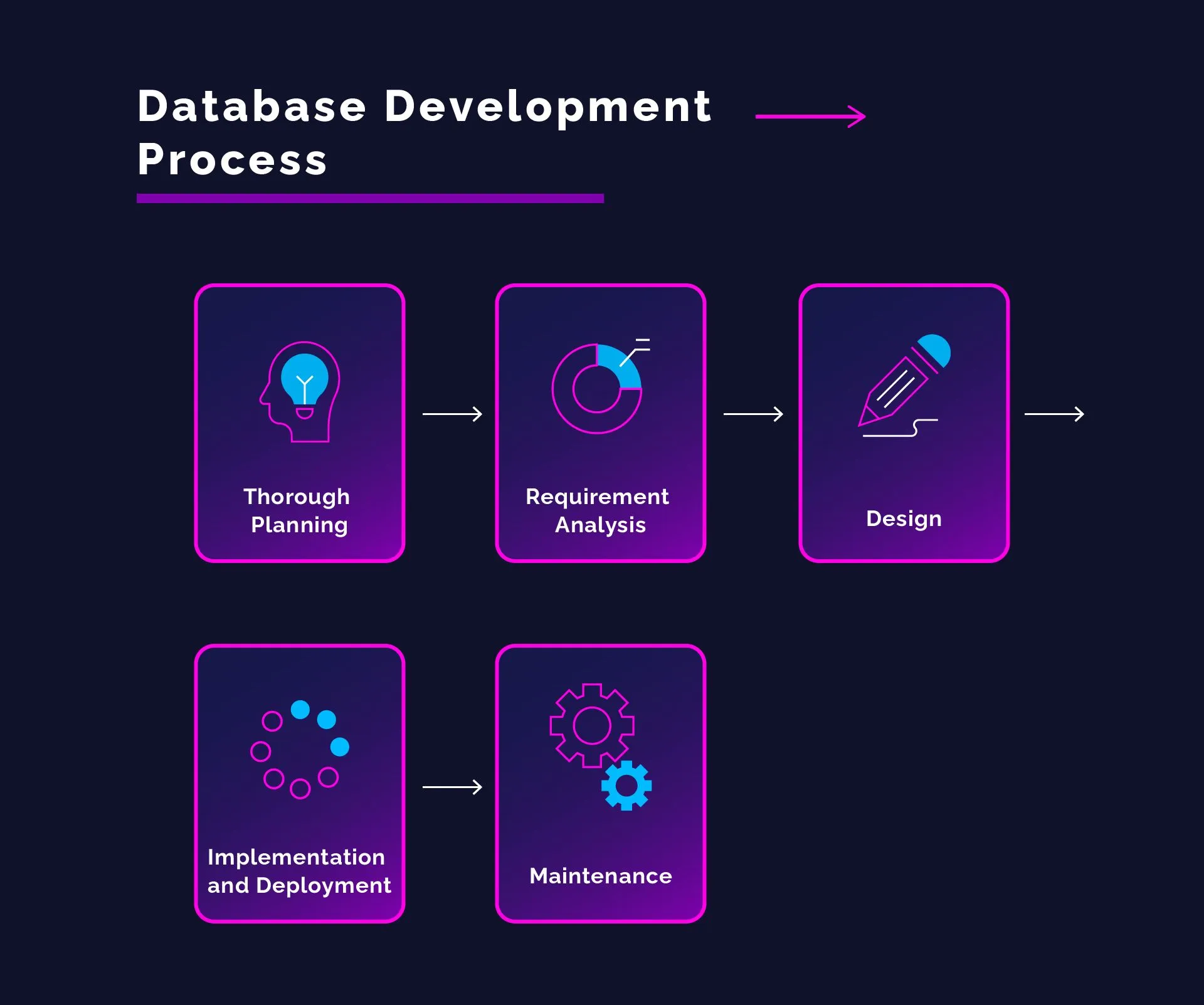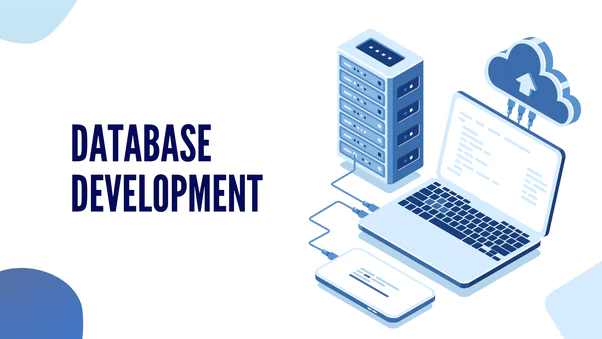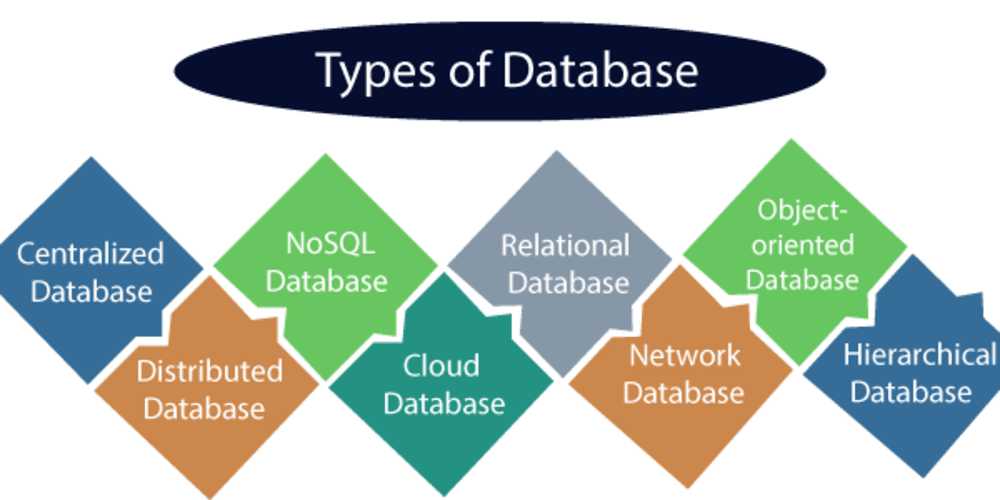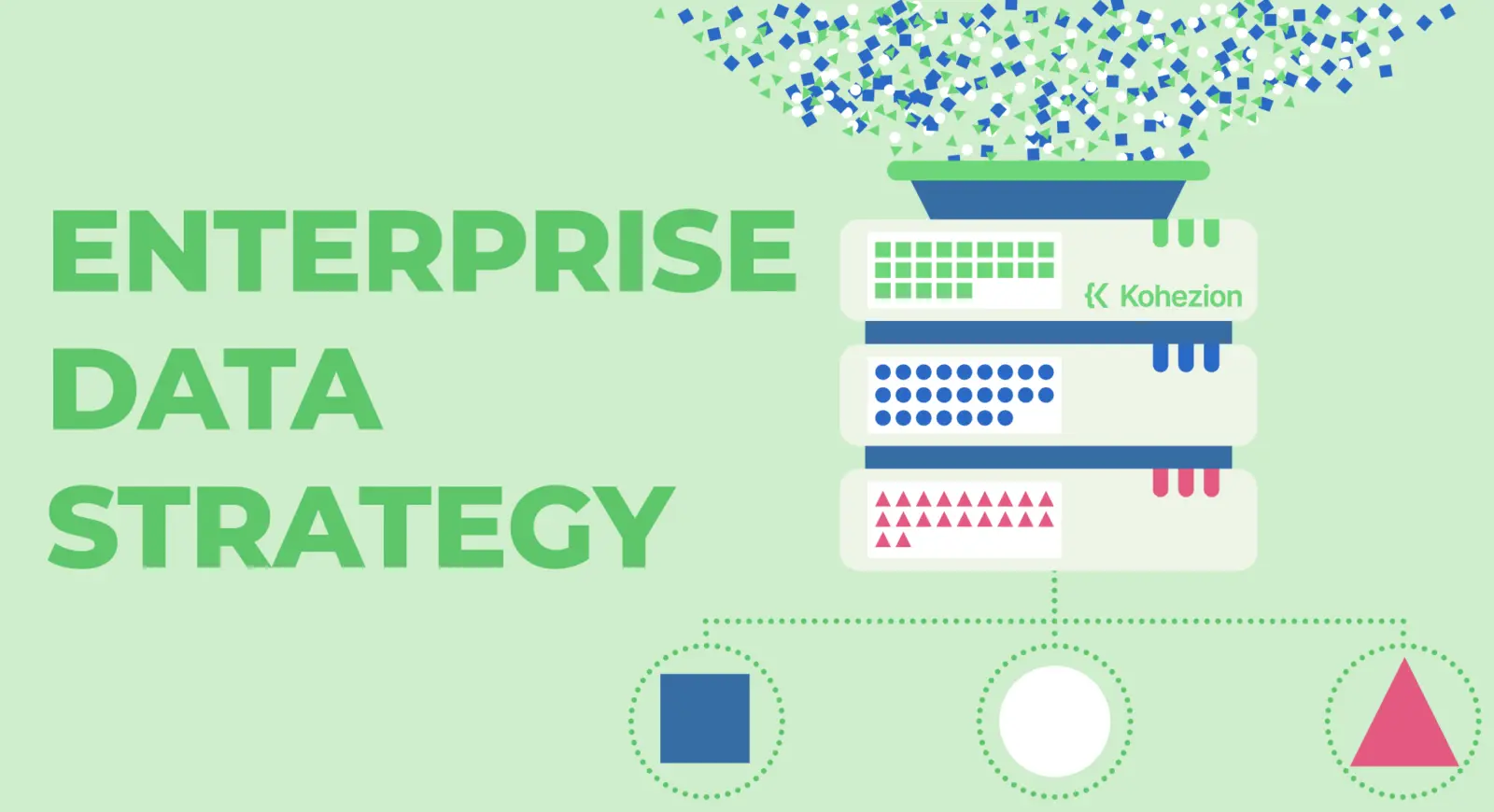The methodical process of creating, setting up, and managing databases for effective data archiving, management, and retrieval is known as database development. Businesses rely on well-developed databases to organize information and support essential operations in today's data-driven environment. The main facets of database building are examined in this guide, along with its importance in contemporary business settings.
What is Database Development?
Database development is the process of building and changing databases during their whole lifecycle. It entails creating the database schema, specifying data types and relationships, building the database structure, and performance tuning. Ensuring data is efficiently and securely stored, promptly retrieved, and used for company operations and decision-making is the aim.
What is the Database Development Process?
The database development process typically includes several phases:

Requirements Gathering: being aware of the data requirements and business needs that the database must meet.
Conceptual Design: putting together a high-level design that describes the database's entities, properties, and relationships.
Logical Design: converting the creative design into a comprehensive, logical schema that includes constraints, tables, and columns.
Physical Design: putting the conceptual schema into a physical database structure while optimizing performance and taking storage needs into account.
Implementation: constructing the database, including tables, indexes, and views, by the physical architecture.
Testing and Optimization: Checking the security, performance, and functionality of the database. Improving indexing and query performance to increase effectiveness.
Deployment and Maintenance: putting the database into use and doing regular maintenance, such as backups, upgrades, and tweaking.
What is Meant by Database Development?
The methodical process of planning, building, and managing databases to satisfy certain business requirements is known as database development. It includes figuring out what data is needed, creating schemas, setting up databases, and making sure that data integrity and performance are maintained throughout time.
Process of Database Development
Database developers, data analysts, and stakeholders work together throughout the iterative process of database creation. The process starts with the definition of the business requirements and proceeds through the phases of design, implementation, testing, deployment, and maintenance. As technology advances and business demands change, the database is continuously improved and adjusted to keep up.
Uses of Database Development in Business
Database development is essential for many different types of corporate operations.

Data Storage and Retrieval: storing and retrieving massive amounts of organized and unstructured data with efficiency.
Decision Support: supplying insights and data analytics to help with well-informed decision-making.
Customer Relationship Management (CRM): Keeping track of client information to enhance marketing and customer support tactics.
Inventory Management: keeping track of orders, supply chain activities, and inventory levels.
Financial Management: keeping track of financial activities, producing reports, and making sure regulations are followed.
Types of Databases to be Developed
Various kinds of databases have distinct functions.

Relational Databases: databases that are organized into tables, rows, and columns and that manipulate data using SQL (Structured Query Language) (e.g., MySQL, PostgreSQL).
NoSQL Databases: Non-relational databases, such as MongoDB and Cassandra, can manage unstructured or semi-structured data and provide flexibility and scalability.
Data Warehouses: central locations for combined data from different sources that are ideal for reporting and analytics.
Cloud Databases: databases (such as Amazon RDS and Azure SQL Database) that are hosted and maintained in cloud computing settings, offering cost-effectiveness, scalability, and accessibility.
Database Strategic Planning
In database development, strategic planning entails matching database projects to overarching company objectives:

Assessment of Needs: assessing the data needs for the present and the future and finding any gaps.
Technology Selection: Select the best architecture and database management system (DBMS) for your needs in terms of performance, scalability, and security.
Security and Compliance: putting policies in place to safeguard data integrity and guarantee adherence to laws (such as GDPR and HIPAA).
Scalability and Flexibility: creating database designs that are flexible enough to expand with a company's needs and change with the times.
Conclusion
The creation of databases is essential to contemporary company operations because it gives companies the ability to use data to their advantage. By comprehending the methods, varieties, and tactical ramifications of database creation, companies can enhance their data administration procedures and stimulate creativity. Ready to improve the capabilities of your database? Try On Wave Group Blogs to find out how database development can change your company.

